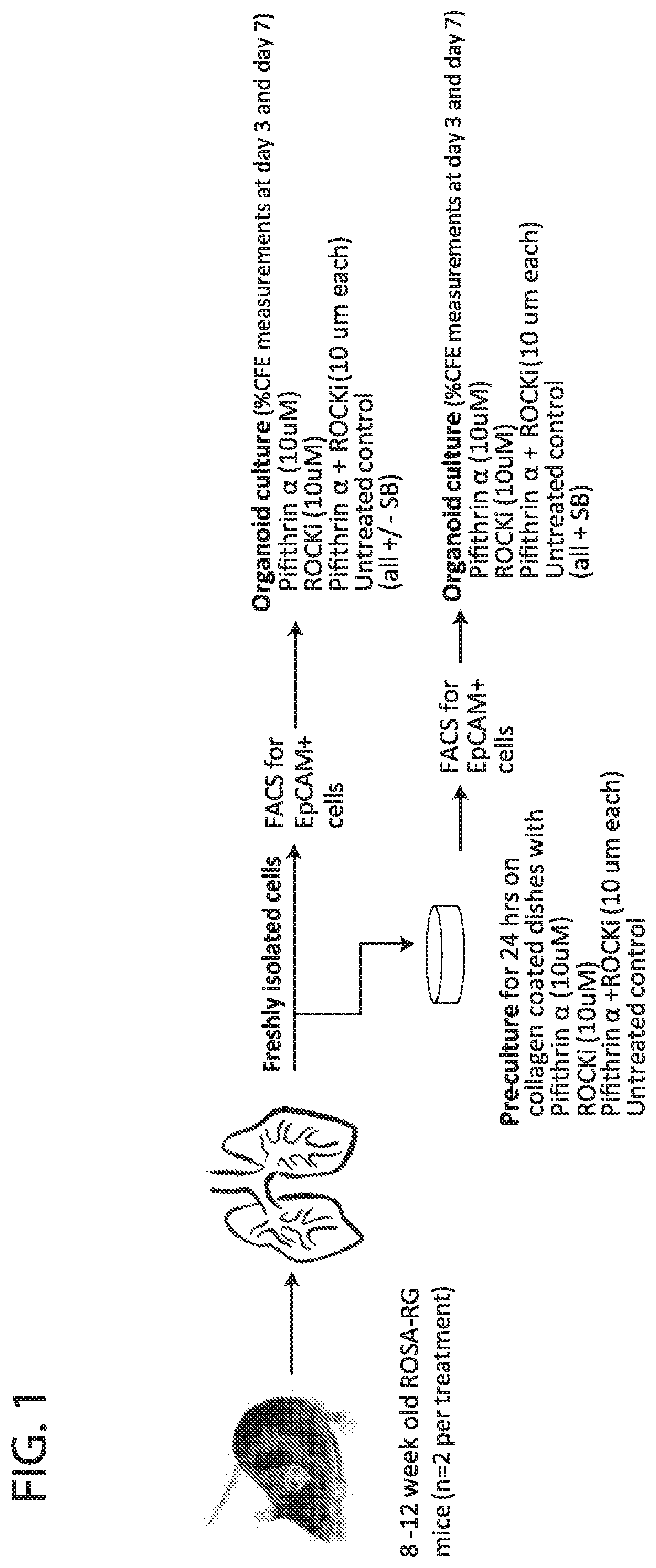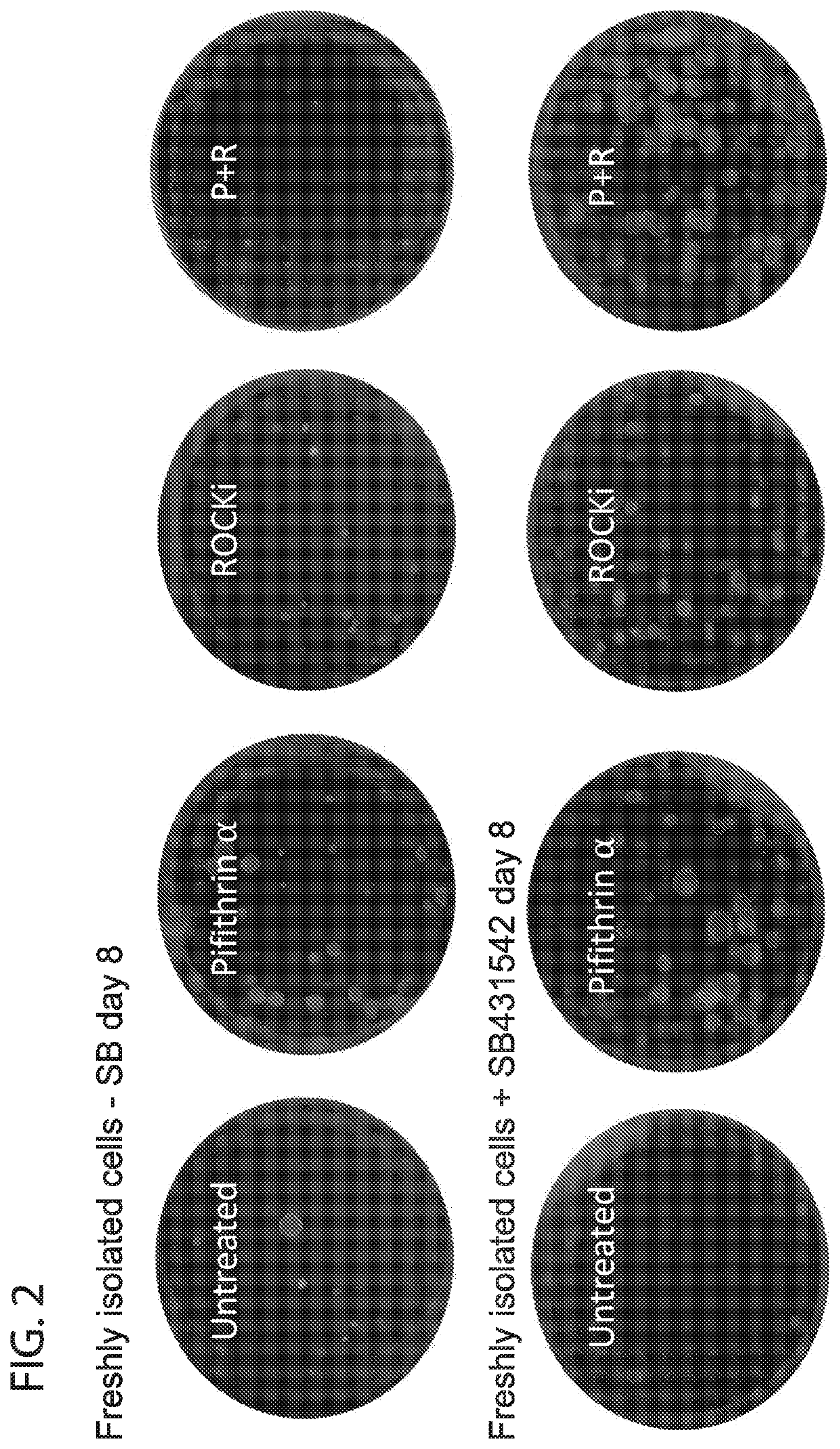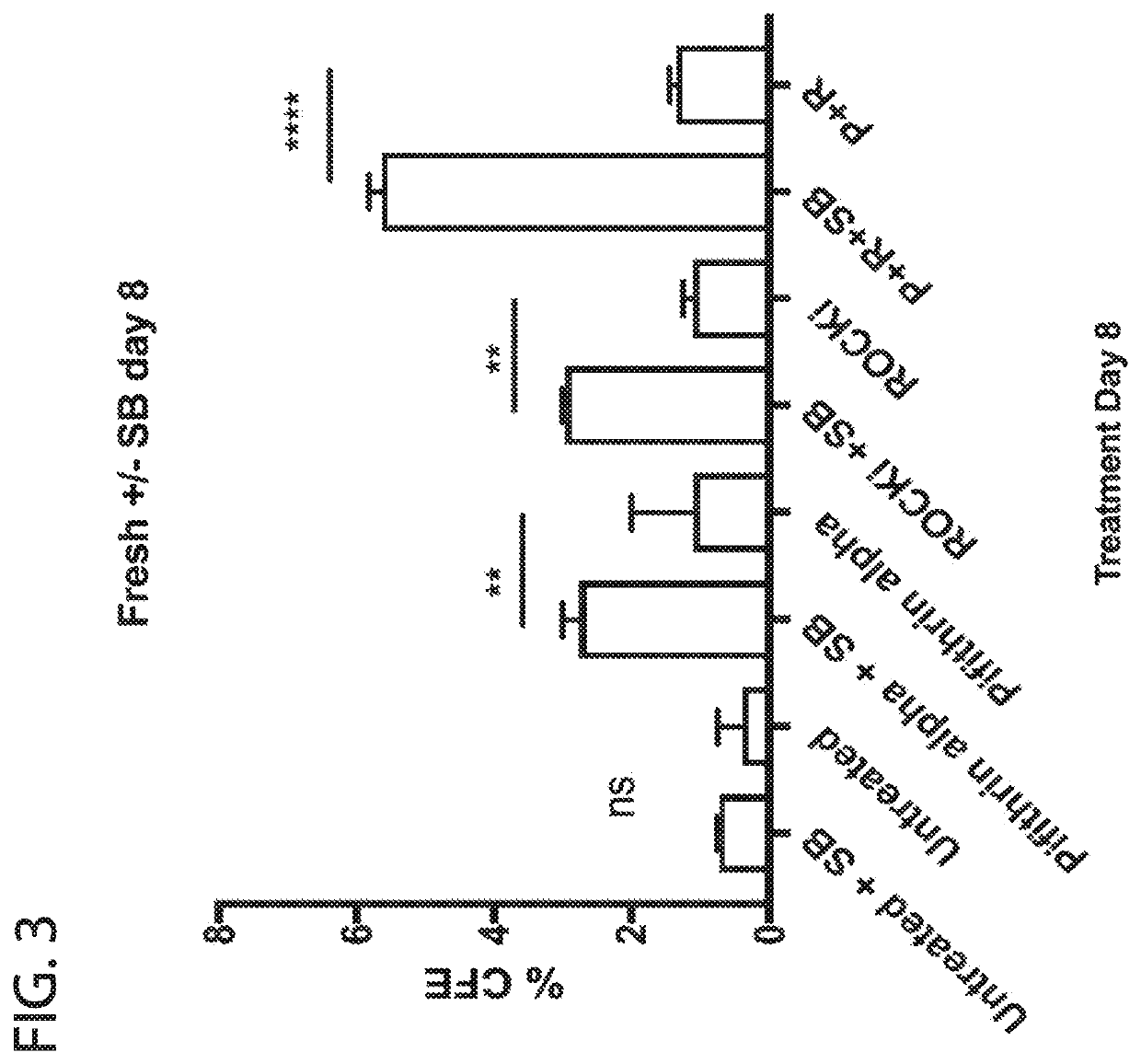Methods for in vitro expansion of adult tissue stem cells
a stem cell and in vitro technology, applied in the field of adult tissue stem cells, can solve problems such as electrolyte transport defect, and achieve the effects of increasing colony forming efficiency, increasing cell proliferation, and increasing the size of organoids
- Summary
- Abstract
- Description
- Claims
- Application Information
AI Technical Summary
Benefits of technology
Problems solved by technology
Method used
Image
Examples
example 1
Exposure to Low Energy Ionizing Radiation (X-Rays) Leads to Loss of Epithelial Progenitor Cell Function
[0049]In previous work the Inventors have investigated the impact of low and high linear energy transfer (LET) ionizing radiation on the function and behavior of epithelial progenitor cells. A key finding from this work that will be exploited in the current proposal is the use of ionizing radiation to pre-condition recipient lung tissue to favor engraftment and expansion of transplanted epithelial stem cells over endogenous resident stem cells. Mice were exposed to total body irradiation (TBI) with 320 kVp X-Rays and progenitor cell function evaluated 24 hours later by FACS isolation of epithelial cells and analysis of colony-forming efficiency in 3D organoid assays (FIG. 1). Assays were performed by mixing equal numbers of epithelial cells from un-irradiated (ROSA-GFP, green) and irradiated (ROSA-RFP, red) mice, mixing with stromal support cells and evaluation of colony-forming ab...
example 2
Orthotopic Cell Transplantation
[0050]The Inventors' initial efforts to develop a protocol for functional engraftment of transplanted epithelial stem cells involved sequential ablation of club cells through delivery of gancyclovir to Scgb1a1-HSVtk trangenic mice followed by delivery of liposome encapsulated chlodronate to deplete macrophages (FIG. 9A-C). The Inventors found that only mixed populations of ROSA-GFP labeled dissociated lung tissue gave rise to engrafting epithelial cells that showed evidence of differentiation into specialized regional cell types (FIG. 9C). Difficulties with this model were lack of translatability and poor survival of recipient mice. To overcome these difficulties, the Inventors adopted low LET ionizing radiation pre-conditioning to promote engraftment of transplanted lung cells. Exposure to 6 Gy X-Rays depleted >95% of functional epithelial progenitor cells within recipient tissue (FIG. 8) and was sufficient to allow efficient engraftment of transplant...
example 3
Loss of p53 Function Enhances Colony-Forming Efficiency of Cultured Lung Progenitor Cells
[0051]Mice were generated allowing tamoxifen-dependent lineage labeling of Scgb1a1+ club cells (Scgb1a1-CreER / ROSAmTmG) alone or together with conditional p53 loss-of-function (p53flox / flox). Isolated lineage-labeled cells were placed in culture and evaluated for colony-forming efficiency and clonogenic capacity. Results shown in FIG. 10 demonstrate that p53 LOF significantly enhances club cell colony-forming efficiency expansion. The Inventors will use lineage tracing in mouse models to fate map different populations of lung epithelial cells and combine with single cell RNA-Seq to reveal their fate following transplantation compared to their native state. Epithelial stem / progenitor cells to be evaluated will include those that can be lineage labeled using either Sox2-CreER, Scgb1a1-CreER, Krt5-CreER and Sftpc-CreER, using FoxJ1-CreER as a negative control. These drivers target overlapping popul...
PUM
| Property | Measurement | Unit |
|---|---|---|
| size | aaaaa | aaaaa |
| time | aaaaa | aaaaa |
| fluorescence imaging | aaaaa | aaaaa |
Abstract
Description
Claims
Application Information
 Login to View More
Login to View More - R&D
- Intellectual Property
- Life Sciences
- Materials
- Tech Scout
- Unparalleled Data Quality
- Higher Quality Content
- 60% Fewer Hallucinations
Browse by: Latest US Patents, China's latest patents, Technical Efficacy Thesaurus, Application Domain, Technology Topic, Popular Technical Reports.
© 2025 PatSnap. All rights reserved.Legal|Privacy policy|Modern Slavery Act Transparency Statement|Sitemap|About US| Contact US: help@patsnap.com



